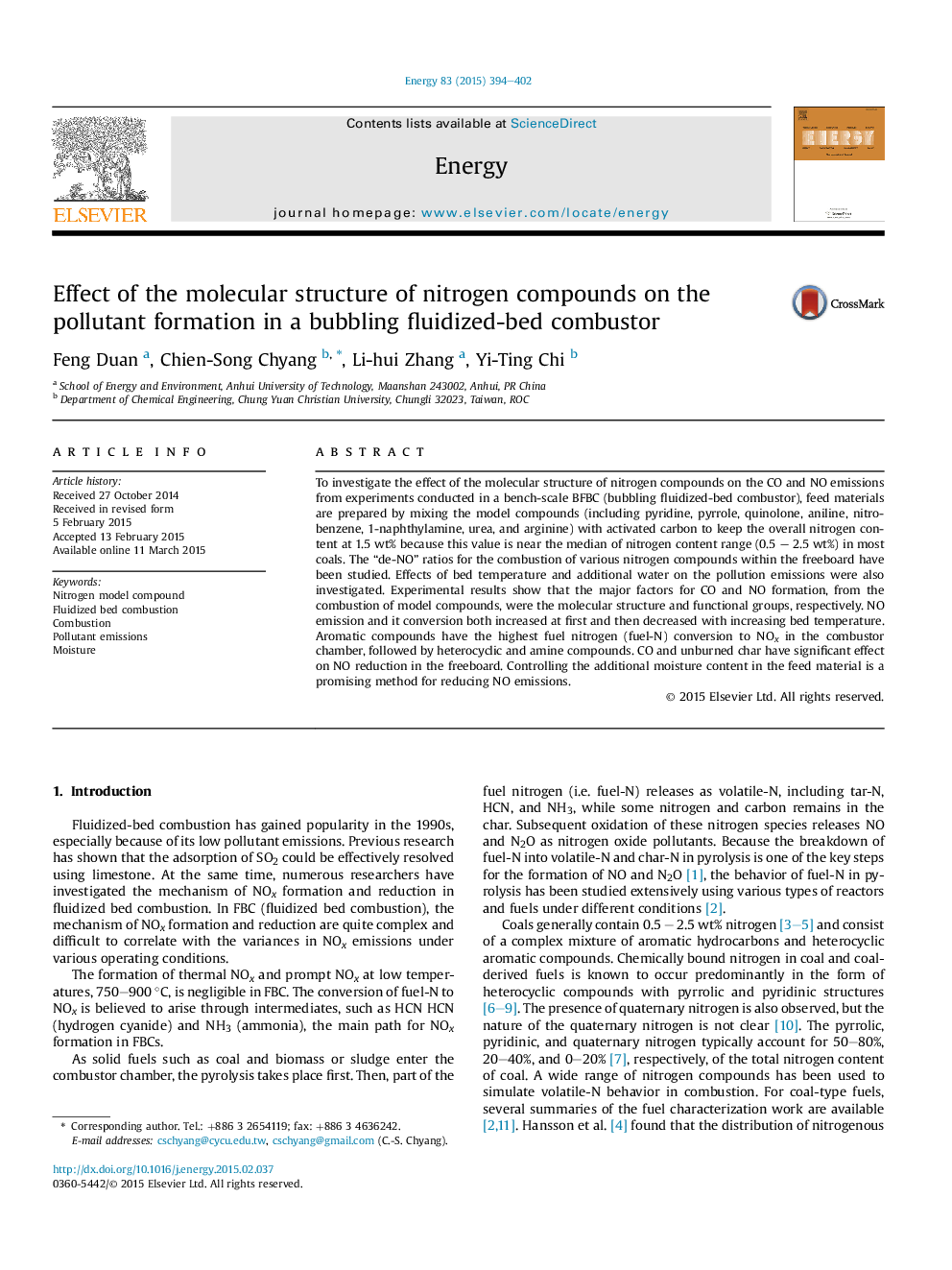| Article ID | Journal | Published Year | Pages | File Type |
|---|---|---|---|---|
| 8074882 | Energy | 2015 | 9 Pages |
Abstract
To investigate the effect of the molecular structure of nitrogen compounds on the CO and NO emissions from experiments conducted in a bench-scale BFBC (bubbling fluidized-bed combustor), feed materials are prepared by mixing the model compounds (including pyridine, pyrrole, quinolone, aniline, nitrobenzene, 1-naphthylamine, urea, and arginine) with activated carbon to keep the overall nitrogen content at 1.5Â wt% because this value is near the median of nitrogen content range (0.5 - 2.5Â wt%) in most coals. The “de-NO” ratios for the combustion of various nitrogen compounds within the freeboard have been studied. Effects of bed temperature and additional water on the pollution emissions were also investigated. Experimental results show that the major factors for CO and NO formation, from the combustion of model compounds, were the molecular structure and functional groups, respectively. NO emission and it conversion both increased at first and then decreased with increasing bed temperature. Aromatic compounds have the highest fuel nitrogen (fuel-N) conversion to NOx in the combustor chamber, followed by heterocyclic and amine compounds. CO and unburned char have significant effect on NO reduction in the freeboard. Controlling the additional moisture content in the feed material is a promising method for reducing NO emissions.
Related Topics
Physical Sciences and Engineering
Energy
Energy (General)
Authors
Feng Duan, Chien-Song Chyang, Li-hui Zhang, Yi-Ting Chi,
